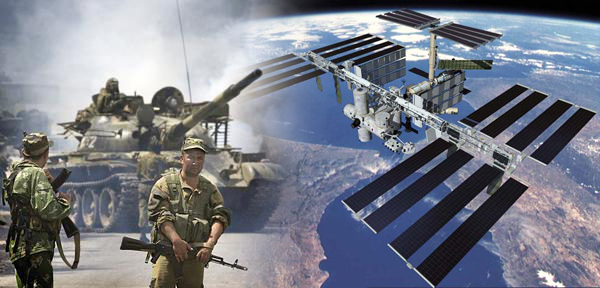[/caption] During a Russian weather observation campaign, cosmonaut Oleg Kononenko took photographs above the South Ossetia region of Georgia soon after the Russian military action in the area on August 9th. According to NASA's ISS Daily Report, Kononenko was monitoring the "after-effects of border conflict operations in the Caucasus" and his orders from Moscow instructed him to carry out this task for humanitarian reasons. Some sources are suspicious of this possible orbital reconnaissance opportunity, citing that the 1998 ISS international agreement enforces the rule that the space station can only be used for civilian activities. However, NASA has stated that the Russian space agency Roscosmos admitted to the photography request, saying that the images were required to monitor serious water management issues and
not
intended for military purposes...
This new article to surface in the Aviation Week website refers to a paragraph in the August 9th entry of the International Space Station Daily Reports:
- ISS Daily Report (Aug. 9th) (emphasis added)
Naturally, only two days after the Russian infringement into the troubled region of Georgia, such a photography campaign from orbit could be seen as a prime opportunity for Russia to attain large-scale imagery for military gain. The AW article even goes as far as outlining the original treaty signed by Russia and the USA stating that the ISS cannot be used for any other reason other than civilian purposes. If Russia did indeed use the ISS for military gain, they would violate the January 29th 1998 ISS cooperation agreement which states (in Article 14), "
The Space Station together with its additions of evolutionary capability will remain a civil station, and its operation and utilization will be for peaceful purposes, in accordance with international law
."
In response to the concerns raised by the AW reporter, a NASA spokesman replied, "
Roscosmos informed us that the pictures were requested to support potential humanitarian activities in the area, including serious water resource management issues
." He also added that there was no need for the matter to be investigated further.
Before hostilities broke out in Georgia, Russian news reported that there were water shortages around the main city of Tskhinvali in South Ossetia due to diversions by Georgian villagers to the south. When the fighting started international aid organizations
did
struggle to distribute water to the affected area. Besides, many would argue that the Russian military wouldn't need military reconnaissance from orbit as Russian forces dominated the region anyway.
I'm also curious just how much detail could
really
be picked out by using a digital camera and 800mm telephoto lens from 330 km (180 miles) high. I'm thinking it wouldn't be
that
much use for military purposes...
Sources: NASA, Aviation Week
 Universe Today
Universe Today
